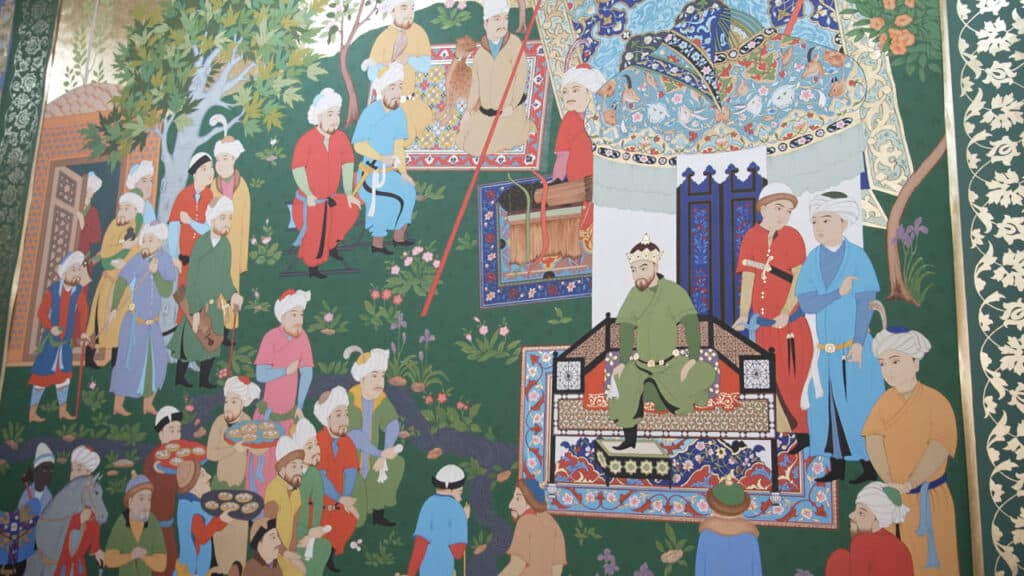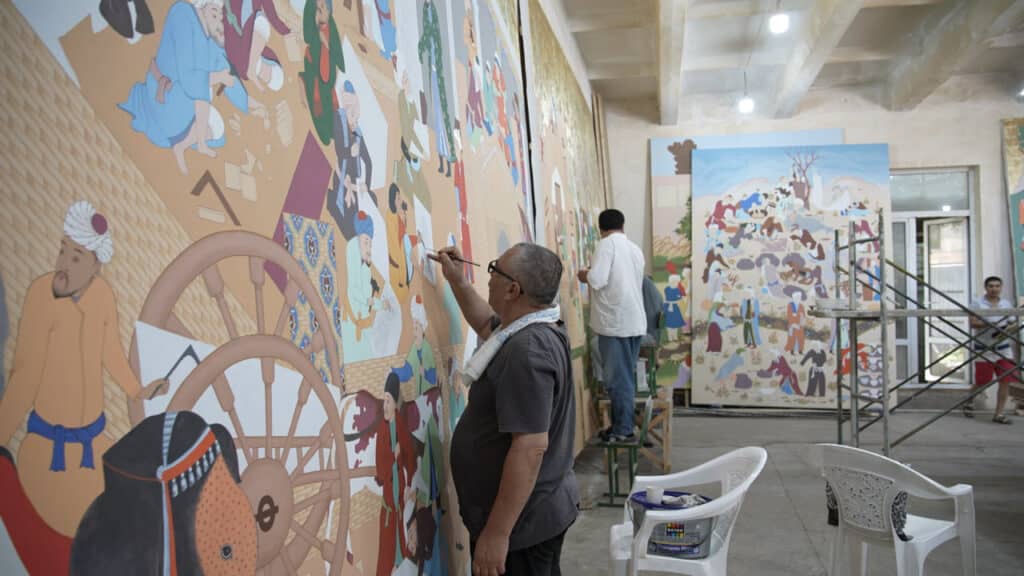
Uzbekistan is actively working on a monumental project titled the Wall of Civilisations and Discoveries, which will form a central part of the Museum of Islamic Civilisation. Dedicated to the Second Renaissance, the artwork will be a nearly 52-metre panoramic mural of miniature paintings standing five metres high, including a one-metre decorative ganchcar ornament.
During a recent press tour attended by scholars, experts and media representatives, it was revealed that around 50 artists have been working non-stop on the wall for over two months. According to artist and Doctor of Philosophy in Art History Behzod Khozhimetov, the mural’s compositions are based on miniatures from the Bukhara, Samarkand, Herat and partially Indian schools.
Although there are elements from the Isfahan, Tabriz and Shiraz traditions, the focus is on local history and scholars, with scenes of hunting and battles deliberately omitted. The miniatures will not merely decorate the space but will also bring historical events and lifestyles to life.
Focus on Amir Temur and Local Legacy
A special section is dedicated to Amir Temur, depicting his rise to power and his contributions to science, architecture and culture through miniatures based on Sharaf al-Din Ali Yazdi’s renowned Zafarnama, which is held in the British Library. At the heart of the mural will be a miniature titled Balkh Kurultai, portraying Temur’s coronation.

Visitors will also see scenes of the Bibi-Khanym Mosque‘s construction as illustrated by Kamoliddin Behzod, and representations of Mirzo Ulughbek’s astronomical and scientific achievements. Two miniatures associated with Ulughbek will feature: one from Nizami’s Khamsa and another showing the constellation Cepheus from al-Sufi’s work.
Another segment highlights the renaissance era in Khorasan, focusing on figures such as Hussein Bayqara and Alisher Navoi, along with their circle, Abdurahman Jami, Kamoliddin Behzod, Khondamir and others from the Herat cultural scene. The display will include their portraits as well as depictions of their support for science, culture and education.
Exploring Dynasties Beyond the Timurids
The mural will also honour Babur and the Mughal dynasty. A rare miniature will depict Amir Temur alongside Babur and his descendants. Furthermore, cultural and scientific achievements from the Shaybanid and Ashtarkhanid periods, dynasties that succeeded the Timurids in Central Asia, will be included.
«The main idea is not war, but civilisations, individuals and their discoveries. 80% of the work is complete. The eight-metre-high wall will be adorned with these miniatures starting from three metres up. We’ve used high-quality fabrics, paints and Italian gold leaf. This could qualify for the Guinness World Records,» Khozhimetov noted.
During the project’s presentation, academics, historians, art experts and artists discussed its concept, offered feedback and provided guidance on refining details. Rustam Jabborov, Scientific Secretary of the Museum of Islamic Civilisation, said the work on the museum’s interior is progressing actively and that the wall concept emerged from a wide panel of experts. They decided that miniatures would best represent the spirit of the Second Renaissance.
«At the centre of the wall will be a reproduction of a 1450 miniature from Zafarnama, currently housed in Britain. We adapted it to fit the exhibition format so visitors can immerse themselves in that era. The selected miniatures, by masters such as Kamoliddin Behzod and Mahmud Muzahhib, capture daily life, governance, social issues and themes related to women and youth,» said Jabborov.
According to him, the project will not only embellish the museum but serve as a living visual textbook for future generations.
Kursiv also reports that Uzbekistan has been named the 25th safest country in the world, according to Numbeo’s 2025 mid-year Safety Index.

